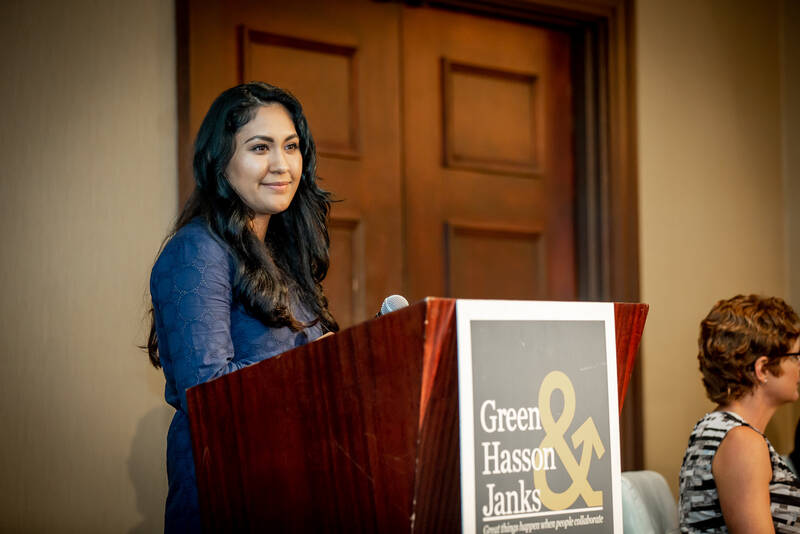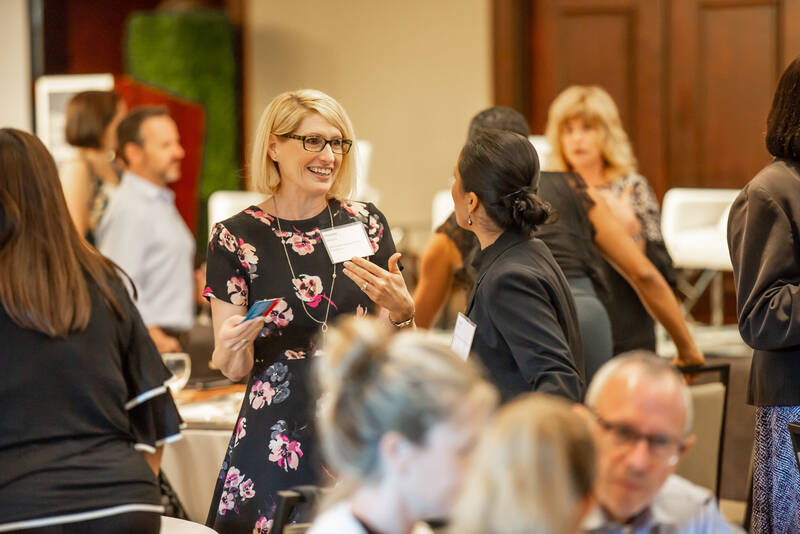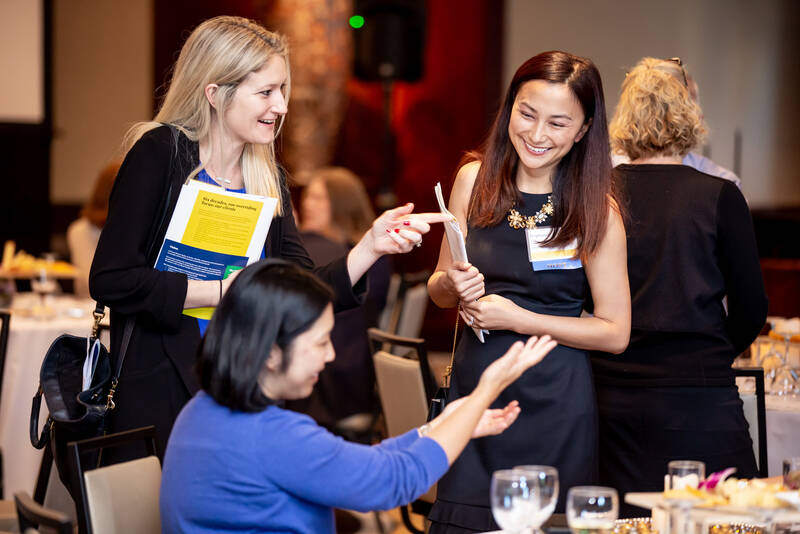I recently helped host GHJ’ 2018 Nonprofit Conference: The Future of Nonprofit Innovation and Technology. As a board member of two nonprofit organizations, Hillsides and Executive Service Corps Los Angeles, the conference had very useful information that can be shared with my boards.
Partnering with the Board
The conference kicked off with our keynote speaker Justin Trout. Justin is the co-founder and COO of Health-Ade Kombucha. His session, “How to build a brand, a culture and a purpose,” started off describing the key factors that differentiate their company from all the rest and what their core values are. Part of Health-Ade Kombucha’s brand is community giving. They want to increase the access to real food for the people that need it most.
To do this, Health-Ade has partnered with Garden School Foundation, a nonprofit organization that gives underserved youth the opportunity to learn about gardening, nutrition and cooking through an outdoor garden classroom. In his speech, Justin provided an authentic private-sector perspective on philanthropy and the partnership with Garden School Foundation.
Some of the key factors he, and other for-profits, look for in a relationship with nonprofit organizations are:
- Being able to quantify the impact, such as with their partnership with Garden School Foundation. The nonprofit has been able to show Health-Ade the impact its programs are having in the community. Looking at matrix-like higher attendance on the days the garden classroom is taught or measuring the decrease in food waste in the school.
- Strategizing a joint venture that will bring brand awareness for his company and promote the nonprofit’s mission and impact at the same time.
- Ensuring there is synergy between the nonprofit’s mission and the private company’s business plan.
- Being creative and willing to take some risks on both sides.
Boards should be open to having their organizations seek partnerships with private sector companies and being aware of how collaboration can benefit both sides.
Strategies to Inspire Innovation on Your Board
The breakout session I attended was called “Fundraising Strategies and Innovations that Work.” With the room overflowing with people, it was obvious this was a hot topic in the nonprofit community. The panel was led by Mari-Anne Kehler (Chief Marketing and Strategy Officer, GHJ) and included Jacqueline Meek (Chief Development Officer, Children's Bureau of Southern California) and Ken Scherer (President, Scherer Strategies).
Some of the key takeaways were how to provide board members with tools to help them fundraise for the organization and ensure that the entire development team has a good relationship with board members. For example, Children’s Bureau of Southern California reduced the number of board members in its governing body and created a Board of Trustees whose main purpose is to fundraise for the organization. Another way to get the board involved is having the Development team go through the year’s fundraising goals and give periodic updates during board meetings as to how they are performing against their goals. A dashboard can be created to easily let the readers evaluate the goals and the progress. The dashboard should also include what the board fundraising goals are to ensure all board members have a financial stake in the organization.
Taking Risks and Donor Relations
The conference wrapped up with the final plenary panel on “Nonprofit Innovation in the Digital Age.” This panel was led by Donella Wilson (Partner, GHJ) and included Michael Couchman (Director, Outreach and Marketing, Casa Pacifica Centers for Children and Families), Trip Henderson (Chief Marketing Officer, Team Rubicon) and Alexis Howell (Enterprise Sales Director, NationBuilder).
During this session Michael discussed how Casa Pacifica Centers for Children and Families has been able to diversify its revenue by now providing private-pay insurance services. This evolved from the organization evaluating the impact child welfare reform changes would have, responding to changes in demographics, and redesigning its business model. Trip discussed how Team Rubicon was able to partner with Microsoft in developing a new software that assists in mobilizing and managing volunteer relations. Team Rubicon is piloting this software in hopes that it will later be used by other nonprofit organizations. The above stories really capture the essence of the conference which focused on innovation and how there are many possibilities out there for nonprofits. It is important for board members to ensure organizations are including the exploration of partnerships and new revenue streams in their strategic goals. The board also needs to encourage management to spend time in seeking such partnerships.
Additionally, Alexis from Nation Builder explained how managing donor relations can be difficult and time consuming. Organizations should evaluate their needs and their current software to see if it is accurately tracking information that is needed by nonprofit organizations. I know that as a board member, it is important that nonprofits have revenue diversification as part of their strategic plan. The board should also routinely check if the organization internally evaluates whether the organization has the software and procedures in place to strengthen donor relations.
The conference was a great forum for individuals in the nonprofit industry to express ideas and concerns. There were significant takeaways in each panel.
We also had the pleasure of sharing our most recent whitepaper Board Governance: The Path to Nonprofit Success with the audience.
Conclusion
The GHJ Nonprofit Team believes that events like these inspire and spark innovation. Should you wish to receive invitations to future events, click here to subscribe to our email list.







